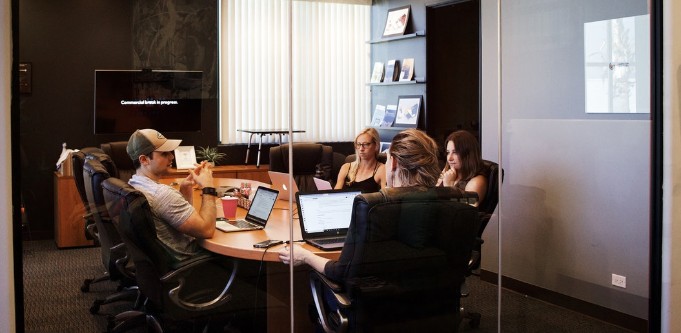
Your company brand is one of the most valuable assets you can build.
As Peter Thiel points out, a strong brand can be a monopoly on its own, and personal branding of a startup CEO can be just as valuable.
Building a unique brand around yourself as an individual can be an incredibly effective business and marketing asset. People like to buy from people, not some faceless organisation, and once you’ve built your reputation it’s much easier to get investors, business deals or valuable speaking engagements to promote yourself and your product.
But the most important point to consider is that most of us already have a digital footprint and as a startup founder the chances are you will have a strong one.
It’s no longer a question of whether you’d like to have a personal brand or not, but whether you choose to cultivate it and turn it into an asset.
Start with your audience
Building a brand in the 20th century was all about putting up ads and marketing messages. In 2015, branding is about providing value — especially when it comes to personal brands.
To provide value, you first have to determine who your ideal target audience is. It can be as narrow as your existing customers but I wouldn’t advise that.
One of the best concepts on this topic is content marketing manifesto by Rand Fishkin of Moz, who himself has built a solid personal brand.
According to Fishkin, you should deliver value in a form of content that’s fun, inspirational, beneficial and easy to share. Regarding target audience, you shouldn’t just target your existing or potential customers, but anyone who they interact with. Instead of creating your content for potential customers, create it for influencers who are already reaching them.
Define your unique value proposition
You want to become a thought-leader in a specific area that’s valuable to the audience you target.
You should think about your strengths, but also your passions. People like to interact with real people, so you want to make sure you’re real, not just some made-up persona.
For example, VC and ex-serial SaaS entrepreneur Jason Lemkin has built an incredible brand in the area of SaaS business. He started with writing a great blog providing SaaS tips and answering a lot of SaaS and startup-related questions on Quora.
Founders of Buffer, a social media scheduling tool, decided to focus on personal productivity, life hacking and happiness. It’s not necessarily related to social media marketing, but in the spirit of content marketing manifesto, they’ve built a valuable brand that helped them scale to million-plus users.
Create valuable content
The next step is to start delivering, and the best place to start is creating content.
That includes blog posts, ebooks, guest posts across popular media, podcasts, infographics and slideshare decks.
But the possibilities go way beyond that. You can create a video blog or podcast and interview other thought-leaders — even sharing valuable articles and resources from other sources counts.
Obviously, you want to have a strategy, determine the best channels and focus on them, instead of doing too many things but none of them properly. Once you become a trusted source of information people will regard you as a thought-leader and an expert to turn to.
Flesh out your online presence and social media profiles
Content is what builds your brand, but if you don’t distribute your content, no one will ever find out about it. You can think of online channels like a personal website and social media as an engine for your brand building.
Your audience will also use social media and your website to stay in touch, interact with you and learn more about you. Make sure all of your profiles are consistent with your brand message, post updates regularly, interact with your followers and don’t be afraid to repost old content again.
Build up your offline outreach too
Just like social media, meetups and events are a great way to market yourself and build up a brand.
You can start with meetup.com, find relevant events and get there to speak. Once you build a reputation, go to bigger events and conferences.
Interact with your audience and point them towards your online assets. A good way to do so is to have double-sided business cards with URLs to your website and social media profiles.
And get your online followers to attend and meet them in real life — walk over to them, get to know them in person. Put simply, people like real people, not some fictitious online personas.
NOW READ: How to reinvent your personal brand after a career change
NOW READ: Own it: The 10 things you need to do to manage your personal brand


COMMENTS
SmartCompany is committed to hosting lively discussions. Help us keep the conversation useful, interesting and welcoming. We aim to publish comments quickly in the interest of promoting robust conversation, but we’re a small team and we deploy filters to protect against legal risk. Occasionally your comment may be held up while it is being reviewed, but we’re working as fast as we can to keep the conversation rolling.
The SmartCompany comment section is members-only content. Please subscribe to leave a comment.
The SmartCompany comment section is members-only content. Please login to leave a comment.